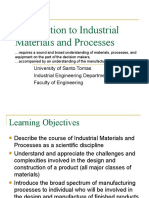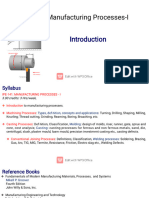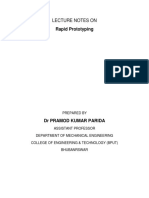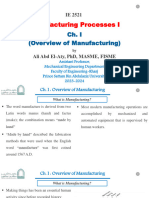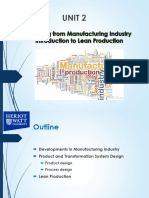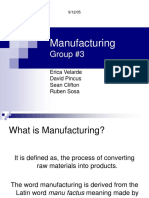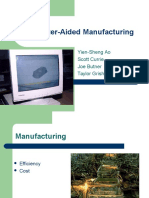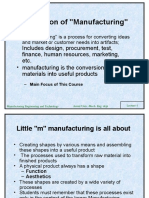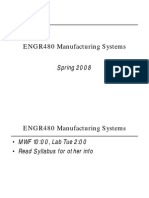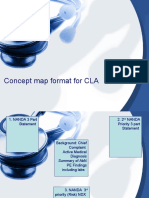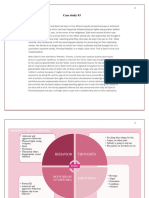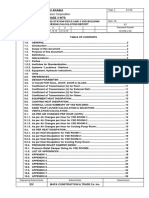0% found this document useful (0 votes)
141 views35 pagesChapter 1 Introduction
This document provides an introduction to manufacturing. It defines manufacturing as the process of converting raw materials into products through design and production processes. Key aspects of manufacturing systems discussed include the roles of design, concurrent engineering, material selection, types of products, manufacturing processes, factory layouts, and the roles of people involved. The document also discusses new issues in manufacturing like global competition and environmental sustainability.
Uploaded by
NizamuSenpaiCopyright
© Attribution Non-Commercial (BY-NC)
We take content rights seriously. If you suspect this is your content, claim it here.
Available Formats
Download as PPT, PDF, TXT or read online on Scribd
0% found this document useful (0 votes)
141 views35 pagesChapter 1 Introduction
This document provides an introduction to manufacturing. It defines manufacturing as the process of converting raw materials into products through design and production processes. Key aspects of manufacturing systems discussed include the roles of design, concurrent engineering, material selection, types of products, manufacturing processes, factory layouts, and the roles of people involved. The document also discusses new issues in manufacturing like global competition and environmental sustainability.
Uploaded by
NizamuSenpaiCopyright
© Attribution Non-Commercial (BY-NC)
We take content rights seriously. If you suspect this is your content, claim it here.
Available Formats
Download as PPT, PDF, TXT or read online on Scribd
/ 35



